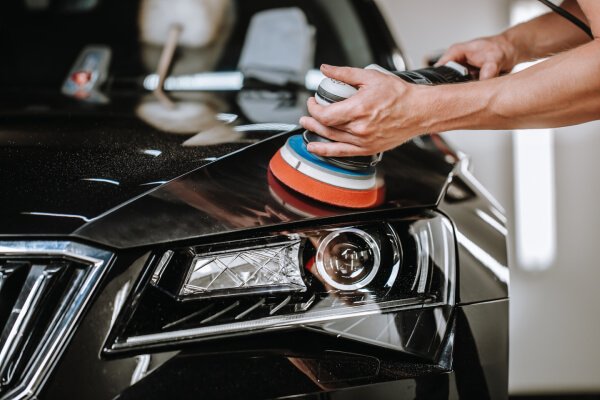
If you’ve ever considered giving your car a fresh coat of paint, you’ve probably thought, “Let’s just get straight to the respray.” But hold up—before you dive into the world of glossy finishes and flawless colour matching, there’s a crucial step that often gets overlooked: cut and polish.
Think of it like prepping a canvas before painting. You wouldn’t slap paint onto a dusty, scratched surface and expect a masterpiece, right? The same goes for your car. A proper cut and polish before respray doesn’t just make a difference—it sets the foundation for how good that new coat is going to look and how long it’ll last.
Here are five signs your car needs a cut and polish before heading into the spray booth.
1. You Can See Scratches… Everywhere
We’re not just talking about that one nasty scratch from the shopping trolley incident last month. If your car is covered in swirl marks, fine scratches, and dull patches, chances are the clear coat has taken a beating. These imperfections may not seem like a big deal now, but they’ll become even more noticeable after a respray if not properly treated.
A cut and polish removes the top layer of damaged clear coat, smoothing the surface so the new paint adheres better and looks even across the panel.
2. Your Car Has Been Through One Too Many Automatic Car Washes
Sure, they’re convenient. But those spinning brushes? Not so gentle. Over time, they leave behind a spider web of micro-scratches, especially noticeable in sunlight.
If you’ve been loyal to the drive-through wash for a few years, your paintwork is likely dulled and uneven. A respray on top of that without prep is like putting a clean tablecloth on a muddy table—it might look okay from a distance, but up close, it’s a mess. A proper cut and polish will give your painter a clean, smooth surface to work on.
3. There’s Oxidation or Faded Paint
Ever noticed parts of your car starting to look chalky or lighter in colour? That’s oxidation. It’s what happens when paint is exposed to UV rays, rain, and pollution over time. The surface starts to break down, which not only looks bad but also compromises the bonding of new paint.
Before respraying, a cut removes the oxidised layer while polishing revives the underlying colour, ensuring a more consistent and vibrant result after painting.
4. The Surface Feels Rough, Not Smooth
Run your fingers gently across the bonnet. Does it feel gritty or uneven? That’s contamination—things like road grime, tar, tree sap, and industrial fallout that bond to your paint over time.
Even if it doesn’t look bad, these surface contaminants will affect how the new paint sticks and cures. A cut and polish acts like a deep clean, stripping back all the nasties and giving your car the smoothness it needs before a respray.
5. Previous Paint Repairs Are Visible
Maybe you’ve had a panel touched up before, or a stone chip filled in. These spot repairs, if not levelled out properly, will show through like scars under makeup once a new coat goes on. A cut and polish can even out those old repairs, blending them into the rest of the panel so they don’t stand out once the respray is done.
Think of it as hitting the reset button on your car’s surface—giving it the best possible starting point for a flawless new finish.
Final Thoughts
Cut and polish isn’t just a “nice to have” before a respray—it’s the prep work that makes all the difference. Skipping it can lead to uneven colour, poor adhesion, and a finish that doesn’t last nearly as long as it should.
If your car is showing any of these five signs, don’t rush to paint just yet. Take the time to get it properly prepped—you’ll be amazed at how much better the final result looks and feels.
After all, every great finish starts with a great foundation. Give your car the surface it deserves, and your respray will go from good to showroom-grade.






